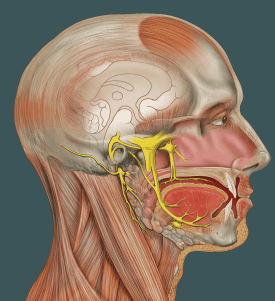Migraine and TMD: A Complex Relationship (that should not be ignored)
Although it’s not news that there’s a relationship between migraine and TMD, it might be a surprise just how complex the relationship is.
TMD refers to temporomandibular disorder/dysfunction, actually a group of disorders that affect (but are not necessarily caused by) the temporomandibular joint (TMJ) and surrounding muscles, nerves, and tissues. TMD may be caused by an injury or a disease such as arthritis. There may also be a connection with structural issues, and even clenching and grinding of the teeth while you sleep.

A 2016 study concluded that the connection between migraine and TMD was complicated further because of other physical symptoms, and the presence of bruxism (clenching/grinding teeth during sleep). Researchers concluded that doctors need to treat both headache/migraine and TMD together.
A study earlier this year asked the question – can the presence of headache disorders, such as migraine, actually predict TMD? In other words, even though migraine may/may not directly cause TMD, does the presence of migraine or another headache disorder tell us that the patient has a good chance of getting TMD later on?
The answer was yes. Patients who had no sign of TMD, but who did have a headache disorder, were far more likely to end up with TMD. The headache condition also tended to worsen in patients who eventually had TMD symptoms. Patients frequently ended up with migraine and TMD.
Researchers again affirmed what I mentioned in our last podcast – headache conditions, migraine in particular, need to be treated (Migraine and Generalized Anxiety Disorder). If they aren’t, they may lead to other conditions. One of those conditions is TMD. And what if the presence of new TMD in turn worsens the migraine? That could may migraine more difficult to treat.
The relationship between TMD and migraine is complex. It’s not a simple case of one causing the other. There may be underlying causes of both.
Doctors and patients need to focus on treating both, and being aware of changing and worsening symptoms so they can be caught early. If migraine or TMD are ignored, or just treated with “painkillers”, patients may find themselves with more pain in the end.

 Because, after all dizziness and vertigo (yes, I know the two are different) are seen in more than just one type of migraine. But today vestibular migraine is
Because, after all dizziness and vertigo (yes, I know the two are different) are seen in more than just one type of migraine. But today vestibular migraine is  Surgery can be done to close the PFO,
Surgery can be done to close the PFO,  Polarized lenses are used in some sunglasses in order to cut down on glare. Anyone who has experienced migraine knows that glare can be like a knife going through your head. Thus, quality sunglasses are popular with migraine sufferers.
Polarized lenses are used in some sunglasses in order to cut down on glare. Anyone who has experienced migraine knows that glare can be like a knife going through your head. Thus, quality sunglasses are popular with migraine sufferers. For example, a study published last month in the American Journal of Medicine researched data on women who were evaluated for ischemic heart disease (“hardening of the arteries”). Of those women, anyone who had reported a history of migraine was at a higher risk of a “cardiovascular event” such as stroke or heart failure. (Study abstract:
For example, a study published last month in the American Journal of Medicine researched data on women who were evaluated for ischemic heart disease (“hardening of the arteries”). Of those women, anyone who had reported a history of migraine was at a higher risk of a “cardiovascular event” such as stroke or heart failure. (Study abstract: